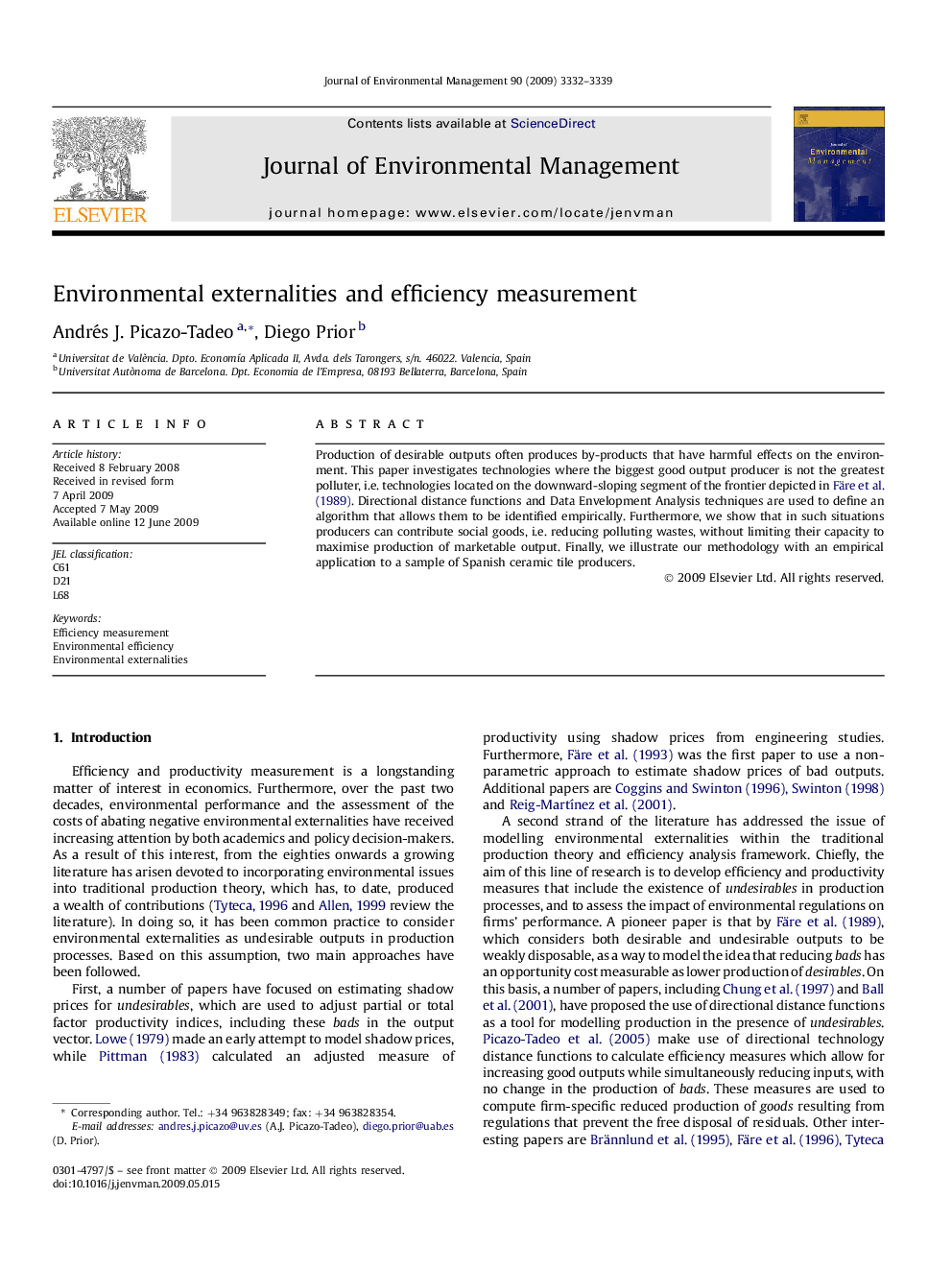| Article ID | Journal | Published Year | Pages | File Type |
|---|---|---|---|---|
| 1058027 | Journal of Environmental Management | 2009 | 8 Pages |
Production of desirable outputs often produces by-products that have harmful effects on the environment. This paper investigates technologies where the biggest good output producer is not the greatest polluter, i.e. technologies located on the downward-sloping segment of the frontier depicted in Färe et al. (1989). Directional distance functions and Data Envelopment Analysis techniques are used to define an algorithm that allows them to be identified empirically. Furthermore, we show that in such situations producers can contribute social goods, i.e. reducing polluting wastes, without limiting their capacity to maximise production of marketable output. Finally, we illustrate our methodology with an empirical application to a sample of Spanish ceramic tile producers.
